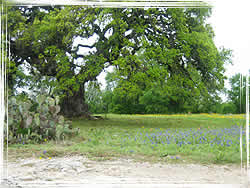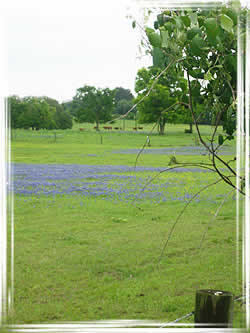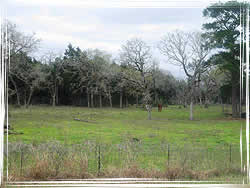Texas Eco-Regions
Post Oak Savannahback to Eco-Regions Map
Elevation
Elevations range from 300 feet above sea level in the southern portion to 800 feet above sea level in the north.
Precipitation
Average rainfall in the Post Oak Savannah is approximately 35 inches in the western counties to 45 inches in the eastern counties.
Topography
Forested areas in the western region of the Post Oak Savannah are generally restricted to bottomland areas associated with water, in areas protected from fire, or those with specific soil types.
Soils
Bottomland soils range from a clay loam to clay, while the uplands have a sandy loam or sandy soil.
Vegetation Description
The Post Oak Savannah is dominated by native bunch grasses and forbs with scattered post oaks and some plateau live oak, black hickory, and blackjack oak. In recent times this historical vegetation has been replaced by species such as yaupon holly, cedar elm, sugarberry, and eastern red cedar. Upland areas are typically where bunch grasses are concentrated.
Impacts of Fire
Recurrent fires and large herds of buffalo were major forces that molded this eco-region. Fires were typically very large and would burn until weather conditions or landforms would contain them. For the most part, fire has been completely removed from the management of this eco-region. This suppression of fire has allowed eastern red cedar, mixed hardwoods, and a thick yaupon understory to take over in most areas. Pasture grasses (bluestem, Bermuda and bahaia grass) have also been established for grazing to support the raising of cattle.
Historical Information
The Post Oak Savannah is a transition zone between the blackland prairies to the west and the Pineywoods to the east. This ecosystem is part of a historic oak belt, which travels south from Canada towards Central America. Few true examples of old-growth Post Oak Savannah in Texas still exist today.
Other
Cattle ranching and hay production are the primary uses for this area along with development for residential property. These land uses have caused a reduction in the number of acres representative of the Post Oak Savannah today. The endangered Houston toad occurs in the eastern portion of this eco-region where deep sands resides.




